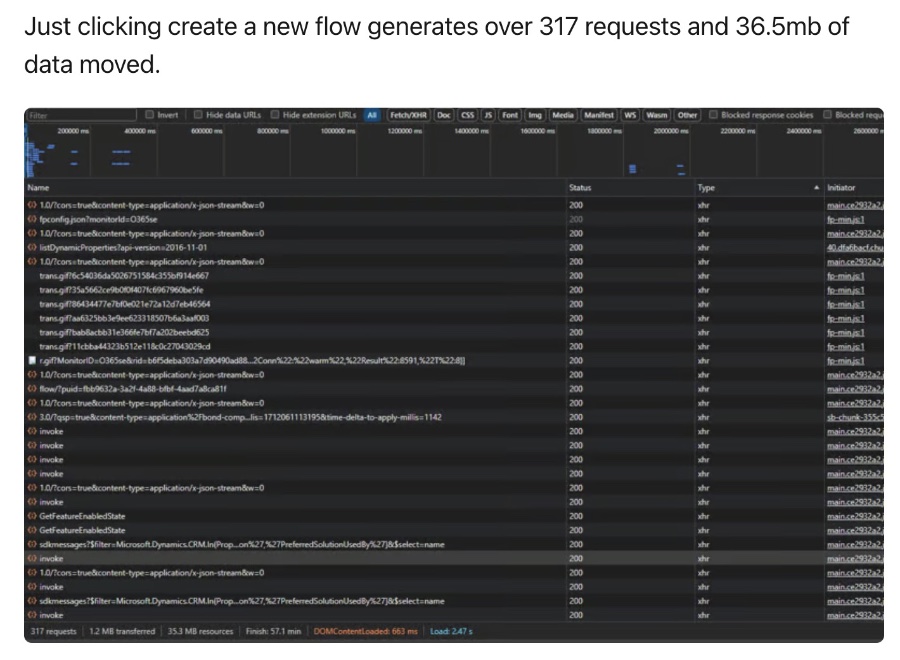
Power Platform: Maximizing Sustainability in Tech
Sustainable Power Platform Use: Smarter Energy in Tech Development
Key insights

- Understand the Environmental Impact: Recognize the environmental consequences of our actions on the Power Platform, including the energy usage of flows and apps.
- Consider Necessity and Efficiency: Before starting a project, evaluate its necessity and potential value. Aim for efficient development to reduce energy consumption.
- Optimize Development and Build Practices: Embrace efficient practices in development and app/flow construction to minimize unnecessary energy use.
- Choose Triggers Wisely: Select the most efficient triggers for flows to avoid wasted computations and energy usage.
- Perform Regular Housekeeping: Regularly audit and remove unused apps and flows to conserve energy and resources.
Ensuring Sustainability in Power Platform Development
Being sustainable on the Power Platform is crucial. We understand the environmental impact of our actions, including the rise in global temperatures due to our growing energy needs. It's encouraging to see organizations and governments taking this seriously and driving change. We must also take responsibility for our actions, particularly when working with the Power Platform.
Working with the Power Platform is easy and lowers the entry barrier for many developers. However, this convenience comes with hidden consequences, as every application and flow consumes energy. It's challenging to calculate the exact energy usage, as it depends on various factors such as data center location and the efficiency of used connectors.
- Data center location
- Number of actions/components
- Connectors used
- Efficiency of connectors
- Time running
- Logging settings
- Data storage
By considering these factors, we can create more efficient flows and applications. Before starting a project, it's important to ask if it's necessary and will add value, as development consumes energy. Also, comparing Power Platform tools like Power Automate and Power Apps with alternatives like Outlook rules or Power BI can lead to more efficient solutions.
When developing solutions, avoiding the 'trial and error' approach can save energy. Sharing knowledge and using documentation can make development 1% more efficient, significantly reducing energy use. Building efficient flows and applications is also crucial, as unnecessary actions waste energy. Quick tips include using filter actions and avoiding nested loops in Power Automate, and in Power Apps, avoiding unnecessary components and overuse of timers.
Read the full article Being Sustainable on the Power Platform

People also ask
What are the benefits of Power Platform?
The Power Platform distinguishes itself through its ease of use and low-code development approach, offering a simplified process for creating applications, integrations, automations, and reports. This democratizes application development, removing the complexities traditionally associated with it and making the technology accessible to users who are not professional developers.
What is the future of Power Platform?
Artificial Intelligence (AI) is at the forefront of the Power Platform's evolution. Key future enhancements include sophisticated AI-powered chatbots via Power Virtual Agents. These chatbots are poised to handle complex customer service inquiries more efficiently and improve automation of routine tasks, signaling a significant leap in how businesses interact with their clientele and manage internal processes.
What is the use of Microsoft Power platform?
The Microsoft Power Platform, particularly through Power Apps, empowers businesses and individuals with little to no technical background to effectively tackle specific business challenges. Users can develop professional-grade applications, automate workflows to reduce manual tasks, and connect to a variety of data sources, thereby enhancing decision-making processes and overall business operations.
What are solutions in power apps?
In the context of Power Apps, solutions serve as a means for transporting apps and components between environments or for implementing a series of customizations on existing applications. Solutions can encompass a wide array of elements, including but not limited to, apps, site maps, tables, processes, web resources, choices, flows, and much more, underscoring their versatility and importance in application development and customization.
Keywords
Sustainable Power Platform, Green Technology, Power Platform Efficiency, Eco-Friendly Technology, Power Platform Sustainability, Renewable Energy Power Platform, Green Computing, Environmental Tech Innovations